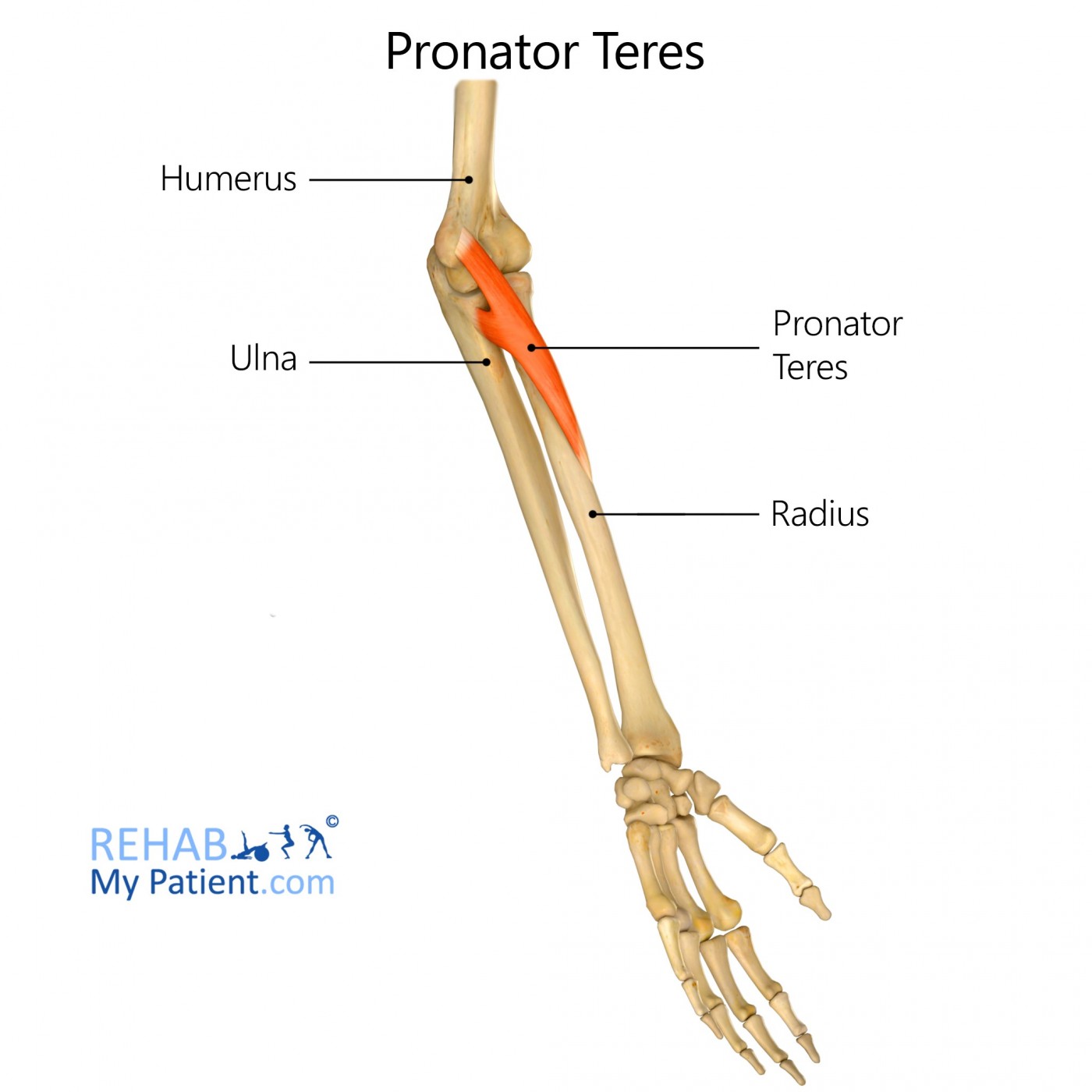
General information
The Pronator teres muscle is mainly located in the forearm, and in combination with the pronator quadratus, works to pronate the forearm. It allows it to turn in such a way that the palm faces backwards when the body is positioned anatomically.
Literal meaning
Cylindrical muscle that turns the forearm (and the palm) down.
Interesting information
Pronator Teres Syndrome is when the median nerve undergoes compression neuropathy at the elbow. Even though the condition is rare when compared to wrist compression, it can be quite painful. Isolated injuries to the anterior interosseous branch of the nerves can cause a great degree of pain. Standard treatment consists of injections of corticosteroids, massage therapy, rest, icing of the area, elevation, and therapeutic exercises.
Origin
Medial aspect of the coronoid processes in the ulnar head.
Slightly proximal to the medial epicondyle of the humerus bone and out of the common flexon tendon.
Insertion
Lateral surface of the radial shaft located near the middle.
Function
Pronation.
Weak flexor in the elbow joint.
Nerve supply
Median nerve C6-C7.
Blood supply
Muscle receives blood from the anterior ulnar recurrent artery from proximal to distal.
Muscular branches of the ulnar artery.
Muscular branches of the radial artery located near the distal attachment.

Relevant research
A 2016 study set out to investigate the prevalence of Pronator Teres Syndrome (PTS) among patients with Carpal Tunnel Syndrome. 8.8% of participants were found to have electrodiagnostic PTS while 27% had clinical manifestations. There was no statistically significant correlation with age, but male patients were found to be more prone to develop PTS. They concluded that PTS should be considered a possibility when patients have Carpal Tunnel Syndrome, especially if it is severe.
Asheghan M, Hollisaz MT, Aghdam AS, Khatibiaghda A. The Prevalence of Pronator Teres among Patients with Carpal Tunnel Syndrome: Cross-sectional Study. Int J Biomed Sci. 2016;12(3):89?94.
Pronator teres exercises
Standing palm press
Using this exercise, the muscles in the forearm and hand will be stretched along with the nerves in the arm. Stand with the right side of the body facing the wall. Spread the feet slightly apart. Press the right hand into the wall, while keeping the torso upright and the arm straight. Fingers should stay pointing up. Pull shoulders back and hold the stretch for five deep breaths. Turn the hand so the fingers point downward without hunching the shoulder. Hold the stretch for five deep breaths. Increase the stretch by tilting the neck away from the hand.
Standing curl and press
Not only does this exercise stabilize the pelvis and torso, but it helps to work all of the muscles in the shoulders and arms. Rotating movements of the arms improve muscle strength and mobility in the forearm. Stand with the legs shoulder-width apart and hold onto a dumbbell in either hand with hands facing toward the legs. Curl the arms to the shoulders and turn the hands facing the shoulders. Press weights over the head and rotate the arms and hands until the knuckles are facing toward the body. Tighten the buttocks to maintain posture and hold the position for a second. Lower the weights to the shoulder and return to the starting position by reversing the pattern. Complete three sets of 10 reps.
Sign Up
Sign up for your free trial now!
Get started with Rehab My Patient today and revolutionize your exercise prescription process for effective rehabilitation.
Start Your 14-Day Free Trial